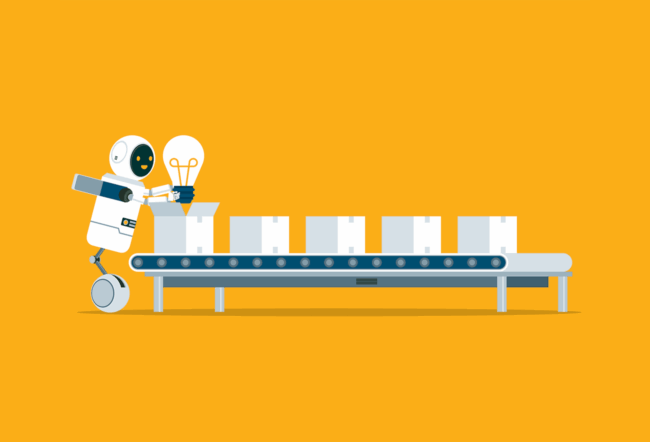When Sachin Agarwal wanted to publish content online, he found that sites like YouTube and Flickr only took him part of the way. They did their jobs well, but there was no site offering a way to integrate photos, text and video into a single product. From this need came Posterous, which aims to become a destination site for individuals and businesses to publish and broadcast information on the Internet. In an interview with India Knowledge at Wharton, Agarwal discusses the inspiration behind his San Francisco-based company and how new technologies — such as cloud computing — have enabled its existence.
An edited version of the interview follows.
India Knowledge at Wharton: Let’s kick off by talking generally about the idea of sharing content online, whether it is pictures, ideas, videos, audio files and so on. Today, people are sharing content at a rate we haven’t seen before and it’s only going to increase. What are some of the benefits the world is going to see from this level of sharing? What are some of the things we need to be concerned about?
Sachin Agarwal: Sharing on the web has picked up a lot. A few years ago, the only people that were sharing things online were professional bloggers and [other] people who wanted to actively go out and spend time publishing. Technology has improved to the point where it has become easier to share. Digital media has made it more exciting to share because people actually want to see photos and videos. Sharing becomes really exciting when you can share with your friends and family. I believe that’s where people find a lot of value; we want to share photos with those close to us. This is fueling the huge explosion of sharing.
India Knowledge at Wharton: I read somewhere that on Facebook, for instance, people are sharing 10 to 12 pieces of media a month and that the number has increased substantially from a year ago. Is that growth going to flatten out or will it snowball?
Agarwal: This is just the beginning. The technology itself is just getting better; posting from mobile devices is actually quite new. That was one of the motivations behind our company Posterous. I had this mobile device and I wanted to share photos and videos from it live, and more easily and quickly.
India Knowledge at Wharton: We are also seeing companies getting a lot of financial or brand value out of sharing content online. What are some of the concerns? Are there privacy concerns? Are there security concerns?
Agarwal: I actually do think that there are privacy concerns from sharing online. I don’t believe [the concerns are] something that should prevent people from sharing. It’s just something that people should be cautious about, or knowledgeable about, when sharing. Who am I sharing it with, and who will ultimately see it? One can’t be too casual when you’re posting things to the world; users need to have a clear idea of what is public and what is private.
India Knowledge at Wharton: Let’s consider some of the major social networks. Could you cite a real-life example of this from your vantage point and experience?
Agarwal: Some of these networks are really simple. Twitter, for the most part, is a public social network, which has significant benefits. It is a great way to follow people who you don’t even necessarily know personally and see what they are talking about. It’s up to each user to broadcast a message or publish something. On the flip side, there are some networks that are totally private, such as a Google group for your company. It’s the gray area in the middle that worries me, when users don’t really know who can see the items they have shared. For example, Facebook has gotten to a point where its network is so big that a user should stop and think about the privacy considerations before publishing something.
India Knowledge at Wharton: How would you frame the debate in this “gray” area?
Agarwal: When Facebook started it was all college kids. And so you would ‘friend’ all of your [classmates] in college. You could share school notes or photos from parties and all that. You felt very safe there because your parents weren’t on it. As a result of the network getting bigger, and parents getting on it and your boss getting on it, [privacy] has become a real issue. [Facebook has] yet to solve that problem independently in a way that is simple enough for most people to understand.
India Knowledge at Wharton: Let’s transition to the phenomenon of self-publishing. Through Twitter or Blogger anyone can publish whatever they want to publish. Do you think there is too much of that going on?
Agarwal: First-generation publishing platforms like Blogger were amazing for their time. Back when Blogger first came out 10 years ago, it was very text heavy. A user would sit down and write a text post. Rich media didn’t exist. That’s one reason [there] was a very small segment of users who wanted to write online. Rich media is becoming cheaper and more available. Flickr came around for photos and YouTube for video. It became way too complicated. Facebook is probably the closest to sort of tying all of it together.
India Knowledge at Wharton: But Facebook is a closed network.
Agarwal: Absolutely, and that is a huge point. At Posterous, we are driven to create a destination that is very personal and open, if you chose it to be. Unlike most options, Posterous lets you get all of this in one package.
India Knowledge at Wharton: There is a lot of noise online. There are many places where people can publish online. Was the level of noise and the confusion about maintaining information on so many different sites the inspiration for Posterous?
Agarwal: Absolutely. I love to publish and I want to share things with my friends and family. I want to do it in a public forum. I want to do it in a way that is very personal. There was not a product out there that would let me publish my photos and my videos and my thoughts in a single place very easily.
India Knowledge at Wharton: So you identified a personal need, went out to the market to find it, realized it didn’t exist and that was the inspiration for Posterous?
Agarwal: Yes. I was using a number of other products and was very unhappy with them. So I literally built [Posterous] for myself.
India Knowledge at Wharton: With Posterous, a user can use e-mail or another quick medium to post his thoughts or rich media onto his page. What else can Posterous do for users?
Agarwal: Posterous is [a] way to publish anything online. It doesn’t matter if it is a micro-blog or a full blog, if it is your individual blog or a group blog for a company, if it is a family-shared site, or if it is a forum or wiki.
India Knowledge at Wharton: How is Posterous able to deliver a free service when it handles all these large files? Aren’t the server requirements huge and a significant cost moving forward?
Agarwal: Here we can use the buzz-phrase “everything is in the cloud.” That’s really what has enabled Posterous to exist; it couldn’t have existed five years ago. We were able to have one machine handle all this for our first users and then, over the past two years, just added new boxes in the cloud, with the click of a button [and] with no upfront costs. We didn’t have to go out and buy servers or racks or anything like that. Cloud costs these days are much lower than they have ever been and they continue to decrease. We don’t think it will be an issue for users. For professional users, the really high-end businesses, we will be able to charge them.
India Knowledge at Wharton: Posterous is currently free for a casual user. How will the company design its premium services?
Agarwal: Our goal at Posterous is to always be 100% free for consumers. We want to add value to people’s personal lives, for their family websites, their baby blogs [and] wedding sites. Beyond this, we are seeing a lot of people take Posterous to their business. They use Posterous in a commercial context; these types of users want support for JavaScript or AdSense. They are monetizing their Posterous sites and that’s the premium version we are going to offer to them in the future.
India Knowledge at Wharton: In terms of new features, what is keeping Posterous developers busy these days?
Agarwal: For 2010, we have a few different goals. First is to make the publishing site easier. We are working on a new bookmarklet [an applet stored as the URL of a bookmark in a web browser or as a hyperlink on a webpage] and a new web editor that makes it easier to compose a rich media blog post and put it online. The second big push for us is distribution. When a user posts to Posterous, your Twitter, Facebook and other social networks will be updated automatically. Another goal is to [communicate with] people by e-mail-based subscriptions. We believe distribution through Twitter and Facebook is great, but it will always be a subset of e-mail.
India Knowledge at Wharton: Can you tell us a little bit more about how the idea for Posterous grew and turned into a company with a product?
Agarwal: Posterous started out as a personal need when I was using Blogger as my blogging platform. I wanted to post a lot of photos and Blogger couldn’t handle that so I started using Flickr. However, whenever I updated my photos on Flickr, I wanted to actually have them on my [blog] as well, so I started copying and pasting HTML. Video was another issue. This system needed a change. The second big push was when the iPhone came out. I was holding this device that is connected all the time and has a camera. Why can’t I just post from it? Posterous started out as the most basic posting tool that I wrote for myself that would just let me post from my iPhone by e-mail and then post [content] to my [blog].
India Knowledge at Wharton: The design of Posterous is simple and elegant. You must have acquired that design sense from somewhere. Did you get exposed to that at Stanford or was it after you graduated?
Agarwal: I’ve been a Mac user all my life. I’ve been following Steve Jobs for almost 20 years. And I worked at Apple for six years. That has played a huge role in how I think about design.



